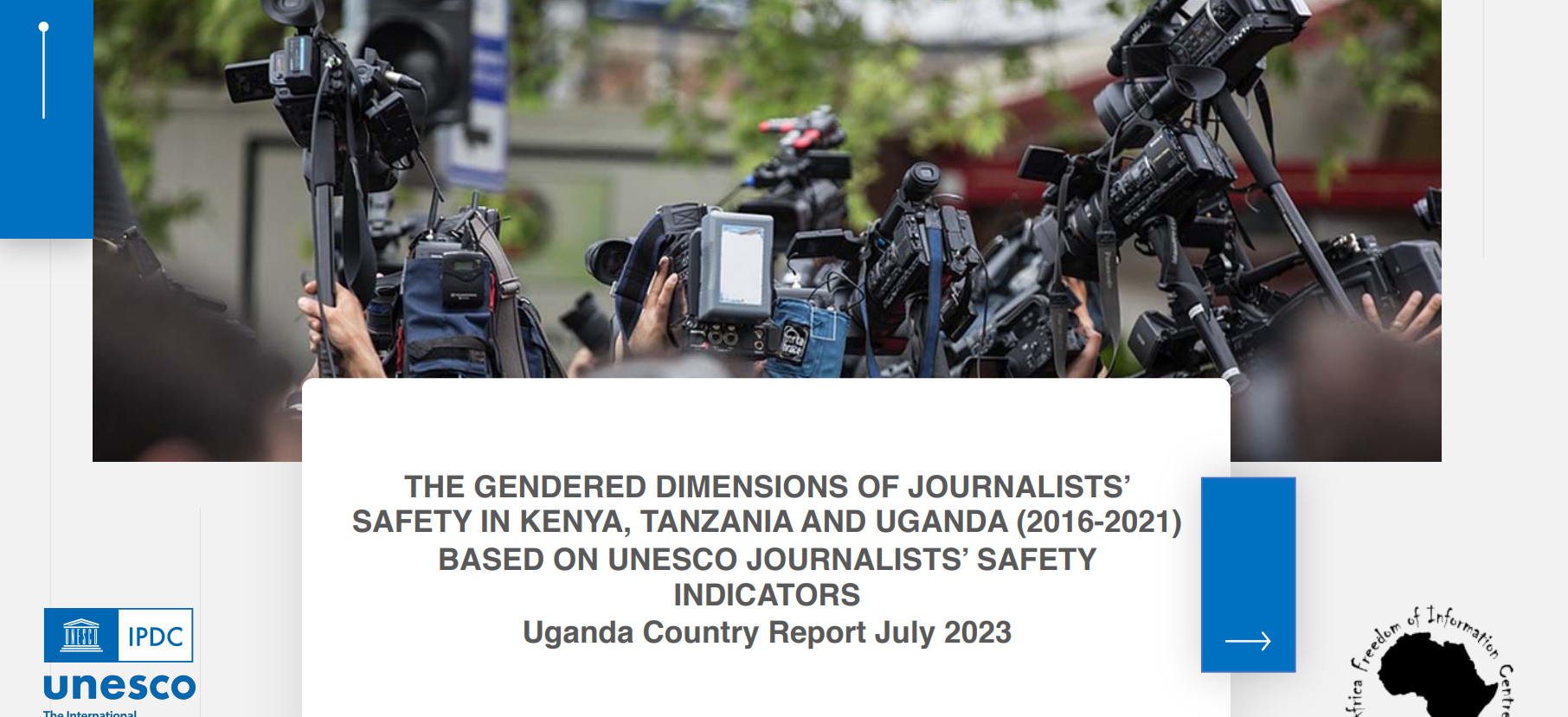Secrecy is the freedom zealots dream of: no watchman to check
the door, no accountant to check the books, no judge to check the law. The
secret government has no constitution. The rules it follows are the rules it
makes up”, U.S. journalist Bill Moyers
commented in 1987 in regard to the secrecy of government and its implications
for democratic freedoms.
The Africa
Freedom of Information Centre (AFIC) with support from UNESCO set out to examine
the gendered dimensions of journalists’ safety based on UNESCO Journalists
Safety Indicators (JSI) in Kenya, Tanzania,
and Uganda.
The findings reveal that
civic space continues to shrink and particularly women journalists and media
workers are faced with gender-based violence in form of stigmatization, sexist
hate speech, trolling, physical assault, rape and even murder which impacts on
their well-being, their work and press freedom at large. Governments have shown
compromised willingness or capacity to ensure freedom of expression, access to
information and protect particularly female journalists.
Specifically, the
study reveals a complex landscape where media safety concerns
intersect with gender dynamics. While both male and female journalists exhibit
acute awareness of safety issues, the experiences are different. Female
journalists encounter distinct challenges, reflecting a less welcoming newsroom
environment and heightened vulnerability to sexual harassment and
cyberbullying.
The examination of newsroom dynamics across Kenya,
Tanzania, and Uganda highlights the prevalence of toxic masculinity
contributing to attacks against female journalists. Sexual harassment, unequal
employment terms, and exploitation persist, shaping a challenging atmosphere
for female journalists. Self-censorship, especially among females, is common,
revealing a systemic failure in anti-harassment policies.
Beyond newsroom, journalists face threats
irrespective of gender. Female journalists encounter hostile harassment,
threats of rape, and online assaults, leading to self-censorship. The physical
threats not only impact individual journalists but also hinder the broader
journalism profession from covering sensitive topics effectively.
The digital realm presents new challenges, with
female journalists experiencing severe safety issues online. From invasion of
privacy to online harassment, female journalists in East Africa find themselves
disproportionately targeted. Media organizations are responding with training
programs and counselling sessions, yet the issues persist, demanding a
multifaceted approach.
The study found that several stakeholders have a role to play in
ensuring the safety of journalists, especially female journalists.
The media: Media organizations acknowledge
the significance of journalists’ safety, evident in the development of safety
policies. However, challenges in implementing these policies, especially
concerning female journalists, persist. The spotlight on prioritizing female
journalists’ safety is a crucial step, yet concerted efforts are needed for
effective implementation.
The State and Political Actors: While state institutions recognize the importance of media
freedom, specific measures for the safety of female journalists are notably
absent. Legal frameworks exist, but the gendered aspect of journalists’ safety
lacks dedicated attention. Advocacy for targeted laws and policies is
imperative to address this gap.
Civil Society Organizations: Civil society organizations play a pivotal role in monitoring
journalists’ safety and advocating for their well-being. However, resource
constraints limit their capacity. Collaborative efforts with international
organizations and increased support are essential to fortify their impact.
Academia: Academia’s role in
research and training is acknowledged, with a call to integrate journalists’
safety into programmes. The gap between academia, policymakers, NGOs, and media
indicates a need for cohesive efforts, aligning priorities to ensure a holistic
approach to journalists’ safety.
United Nations and Intergovernmental Bodies: The UN and international bodies exhibit commitment to
journalists’ safety, particularly female journalists. Collaborative
initiatives, capacity-building programs, and partnerships highlight a
collective effort to implement the UN Plan of Action on the Safety of
Journalists and the Issue of Impunity.
As East Africa grapples with multifaceted challenges
surrounding journalists’ safety, a holistic approach is imperative. This
UNESCO-backed study not only unveils the gendered dimensions of these
challenges but also emphasizes the need for coordinated efforts among media
stakeholders, governments, civil society, academia, and international bodies.
Concrete measures, especially addressing the distinct challenges faced by
female journalists, are essential to foster a safe and inclusive media
landscape in East Africa.





